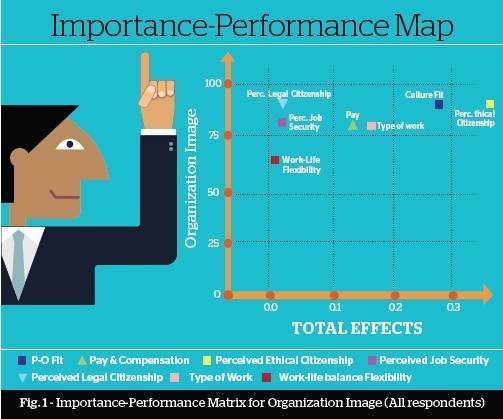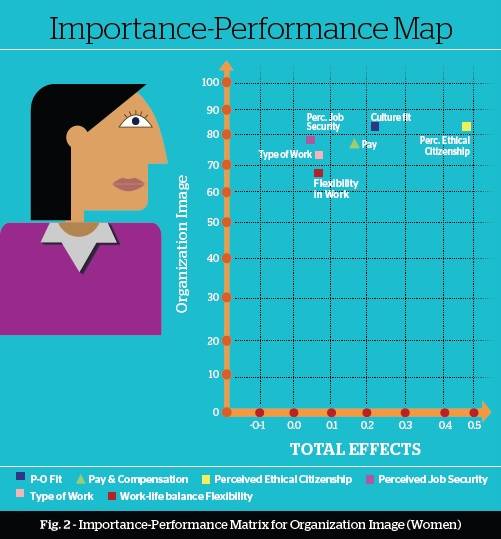Organization Image: Fitting the jigsaw pieces

What people construe as distinctive, central and enduring about an organization helps in defining the organizational image
The simplest levers for building a strong organization image are culture, policies and practices which demonstrate fairness and equity to its employees
Ansel Adams, a brilliant photographer and renowned environmentalist said. “There is nothing worse than a brilliant image of a fuzzy concept.” Organization image, as a construct, is a perfect example to illustrate this point.
There has been a lot written and many heated debates and seminars held on the importance of organization image, the need for a powerful employer brand and an effective employer branding based on the ephemeral concept of organization image. There seems to be unanimity among CEOs, CXO’s and CHROs that a strong organization image is both helpful and desirable. All of this raises the fundamental question of what explains the construct “Organization Image." Talking to a few of my colleagues and business leaders elicited some interesting definitions of the term ‘organization image’. Some phrases shared were “having a strong culture," “ a good brand," “having a good reputation," “financially strong," “a company known to be good to its stakeholders” etc. Thus, with all these varied perceptions of organization image, appreciating that both internal employees and external talent value an organization having a good image, it becomes important to understand exactly what attributes define this construct.
Research defines organizational image as “the way the organization is perceived by individuals. It is a loose structure of knowledge, belief, and feelings about an organization." What people construe as distinctive, central and enduring about the organization (Dutton et al., 1994) helps define the organizational image. Various organizational images exist, as different stakeholders (e.g. shareholders, existing employees and potential applicants) are likely to have different views on what constitutes an organization. Hence, organizations need to closely work together with stakeholders in order to channelize the available knowledge and beliefs to favorably shape attitudes and feelings about the organization. An organizations’ image plays an important role in the minds of the applicant and helps the applicant to distinguish the organization from its competition (Cable & Turban, 2003). Hence, being able to establish a favorable image in the minds of the applicants can help an organization to attract a larger and more qualified talent pool. From the domain of talent management, understanding the perceptions important to existing and future talent pools becomes critical for sending a contextually relevant message.
Another common confusion seems to exist in the loose interchange of the terms “organization image” and “organization reputation.” Is this just quibbling over semantics? Referring to research can help in understanding the finer nuances of these constructs. While the term ‘organization image’ was defined as a function of the information available to individuals, the term ‘organization reputation’ was limited to the publically listed rankings of the organizations in reputed journals i.e. “a public's affective evaluation of a firms' name relative to other firms.” Hence, organization image appears to be a more comprehensive and overarching construct.
Jobs are complex and people can have quite diverse motivations towards their work. Some of these motivations provide instrumental benefits (utilitarian need to maximize benefits and minimise costs), while symbolic benefits are subjective, abstract, are intangible traits and relate to dimensions which enhance self-esteem. For instance, feelings of well-being generated through employment with an organization having a good image would be a symbolic benefit. On the other hand, pay would be an instrumental benefit. Various researches refer to these motivations as “work values” (O'Connor & Kinnane, 1961), “work goals” (Bu & McKeen, 2001) or “job attributes preferences” (Konrad, Ritchie, Jr, Lieb, & Corrigall, 2000).
The Research
To understand what dimensions of work values shape perception formation and development of organization image, an empirical study was undertaken. Previous researches on recruitment had identified important facets of work values such as pay, promotional opportunity, job location, benefits, autonomy, flexibility in work, skill fit, culture fit and type of work. This research study was focused on employed, professionally qualified, white-collar individuals working in the IT/ITeS and Manufacturing Sectors within India. While the respondents were expected to be representative of high growth industries in an emerging economy, the findings of this study may not be representative of the entire workforce. The methodology of the study involved data collection from 1128 employees in IT/ITeS and 956 employees from the manufacturing industry. Data were collected by administering the questionnaire in an online mode and Smart-PLS 3 was used for the analysis. The demographic distribution of the respondents is given in Table 1, on the previous page).
The work values which could help explain the construct “organization Image” were pay and compensation, type of work, perceived job security, P-J fit (skill fit), P-O Fit (culture fit), perceived legal citizenship (perception of legal and regulatory compliances by the organization), perceived ethical citizenship (perception of fairness to employees), work-life balance (infringement of work on personal time) and work-life balance (flexibility). The PLS algorithm was run through a sequence of regressions in terms of weight vectors which provided the highest R² value for endogenous latent variables and is generally applicable for all kinds of PLS path model specifications and estimations (Hair, Jr, Hult, Ringle, & Sarstedt, 2014).
Standard PLS-SEM (partial least squares path modeling) analyses provides information on the relative importance of constructs in explaining other constructs in the structural model as information on the importance of constructs is relevant for drawing conclusions. It also calls out the independent variables (for e.g. pay and compensation, type of work, perceived job security etc.) that are statistically significant and can explain the dependent variable (Organization Image). The ß coefficients in the regression model help understand the respective weight or salience of each of the independent variable with respect to its impact on the dependent variable.
Analysis and Results
The PLS-SEM analysis also provides an importance-performance map analysis (IPMA). This extends the results of PLS-SEM by also taking the performance of each construct into account. As a result, conclusions can be drawn on two dimensions (i.e. both importance and performance). The significance of the IPMA matrix is that it provides clear directions and the ability to prioritize managerial actions. Consequently, it is preferable to primarily focus on improving the performance of those constructs that exhibit a large importance regarding their explanation of a certain target construct but, at the same time, have a relatively low performance.
The Importance-Performance Matrix Analysis (IPMA) which contrasts the structural model total effects (importance) represented on the X-Axis and the average values of the latent variable scores (performance), given on the Y-axis (Hair, Jr et al., 2014: 206) provides a graphical representation of effect of the latent variables. An extremely simplistic way of reading an IPMA matrix would be focus on constructs which reside in the top right hand section of the matrix.

The IPMA analysis for ‘organization image’ for all respondents is shown in Figure 1.
Figure 2 indicates that the strongest predictors for organization image are constructs called “Perceived Ethical Citizenship” and “P-O Fit” (Person-organization fit). The former is a measure of how fair an organization is perceived, what grievance redressal systems it has, whether there are systems and processes in place to ensure equity and transparency, and if there are “no- firsts among equals”. The latter is a common measure of culture-fit, including value fit. Other important factors emerge as “Type of work” and “Pay.” The perception of statutory legal compliance and adherence to the law of the land, termed as “perceived legal citizenship” has high importance but relatively lower predictive power for explaining organization image. Lowest in performance and predictive power, but still significant predictors are “Perceived job security” and “Work-life balance flexibility."

Figure 1 is indicating the importance-performance for the population at large and does not differentiate between talent segments. For instance, the importance and strengths of the predictors may be significantly different for the millennial generation as compared to Baby Boomers or Gen-X. An illustrative example of this difference is shown through the IPMA matrix between gender groups. Interestingly, the IPMA matrix for women indicates the importance of perceived ethical citizenship as the strongest predictor to explain organization image (see Figure 2).
So while “perceived ethical citizenship” and “culture fit” appear to exhibit the highest importance, the predictive power of “perceived ethical citizenship” is the strongest. This indicates that organizations investing in affirmative action to increase gender diversity need to strongly communicate in their employer value propositions, the systems and processes committed to providing a fair treatment to women employees. Apart from an absence of glass ceiling, mechanisms to ensure equity in performance management, reward systems, addressal of sexual harassment, etc. and the salience of perceived justice will help reinforce the message of ethical citizenship by the organization towards female workforce.
Relevance
This study was focused on distilling the various factors which aggregate in the minds of the talent pool to form the construct “organization image.” This becomes important, since it removes a fuzzy image of organization image, crystallizes the factors which explain it and provides a direction to the HR function. It further optimizes the specific dimensions which should be focused on for employer branding initiatives. Since most organizations and HR functions have limited resources to invest in employer branding, sharpening the communication on dimensions which make the largest impact are preferred. For example, talking about ethical practices, systems and processes which build equity, transparency and a level playing field for all employees, along with organization culture is expected to have the highest impact in cementing the image of an employer brand across all talent pools. Talking about dimensions of job security and type of work are therefore expected to have a relatively lower impact in shaping organization image among the talent pool.
A limitation of this study is that it may not have included a lot more factors which could have explained the construct “organization image” in a better manner. While the factors included in the study were able to explain the attributes of organization image to a great level (adjusted R² value of 0.55), there could be many more factors like corporate social responsibility exhibited, work environment, performance of product brands, financial performance, life-stage of the organization etc., which could also help explain the complex construct of organization image. Additionally, it is important to clarify that these predictors and their performance in explaining organization image are not to be confused with other constructs like “organization attraction” or “job pursuit intentions.” Thus, influence of ‘work-life balance’ and ‘flexibility’ may strongly influence job pursuit intention, but, as seen above, has a relatively weaker influence on shaping organization image. Also, as mentioned above, the importance-performance of these factors across different talent groups would be different and need to be understood, if organizations face challenges in specific talent segments. However, for practitioners and HR managers, the immediate relevance of this research emerges from the understanding that the simplest levers to building a strong organization image would be in talking about the culture, highlighting policies and practices which demonstrate fairness and equity to its employees.
References
Bu, N., & McKeen, C. A. (2001). Work goals amoing male and female business students in Canada and China: the effects of culture and gender. International Journal of Human Resource management, Vol.12, Issue 2, 166-183.
Cable, D. M., & Turban, D. B. (2003). The Value of Organizational Reputation in the Recruitment Context: A Brand-Equity Perspective. Journal of Applied Social Psychology, Vol 33, 2244-2266.
Hair, Jr, J. F., Hult, G. M., Ringle, C. M., & Sarstedt, M. (2014). A Primer on Partial Least Square Structural Equation Modeling (PL-SEM). Thousand Oaks, California: Sage Publications.
Konrad, A. M., Ritchie, Jr, E. J., Lieb, P., & Corrigall, E. (2000). Sex Differences and Similarities in Job Attribute Preferences : A Meta-Analysis. Psychological Bulletin, Vol.126, No.4, 593-641.
O'Connor, J. P., & Kinnane, J. F. (1961). A factor Analysis of Work Values. Journal of Counselling Psychology, Vol8. No.3, 263-267.











